
How to Use XL4015 Step Down 5-32V: Examples, Pinouts, and Specs
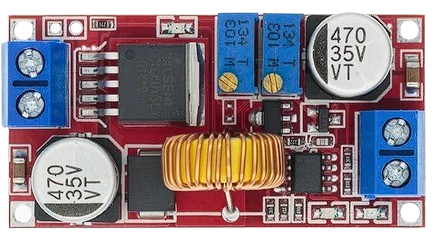
 Design with XL4015 Step Down 5-32V in Cirkit Designer
Design with XL4015 Step Down 5-32V in Cirkit DesignerIntroduction
The XL4015 Step Down 5-32V is a high-performance DC-DC buck converter designed to step down input voltages ranging from 5V to 32V to a lower, user-defined output voltage. It is capable of delivering up to 5A of output current, making it suitable for a wide range of applications. This component is widely used in power supply circuits, battery charging systems, LED drivers, and other electronic devices requiring efficient voltage regulation.
Explore Projects Built with XL4015 Step Down 5-32V
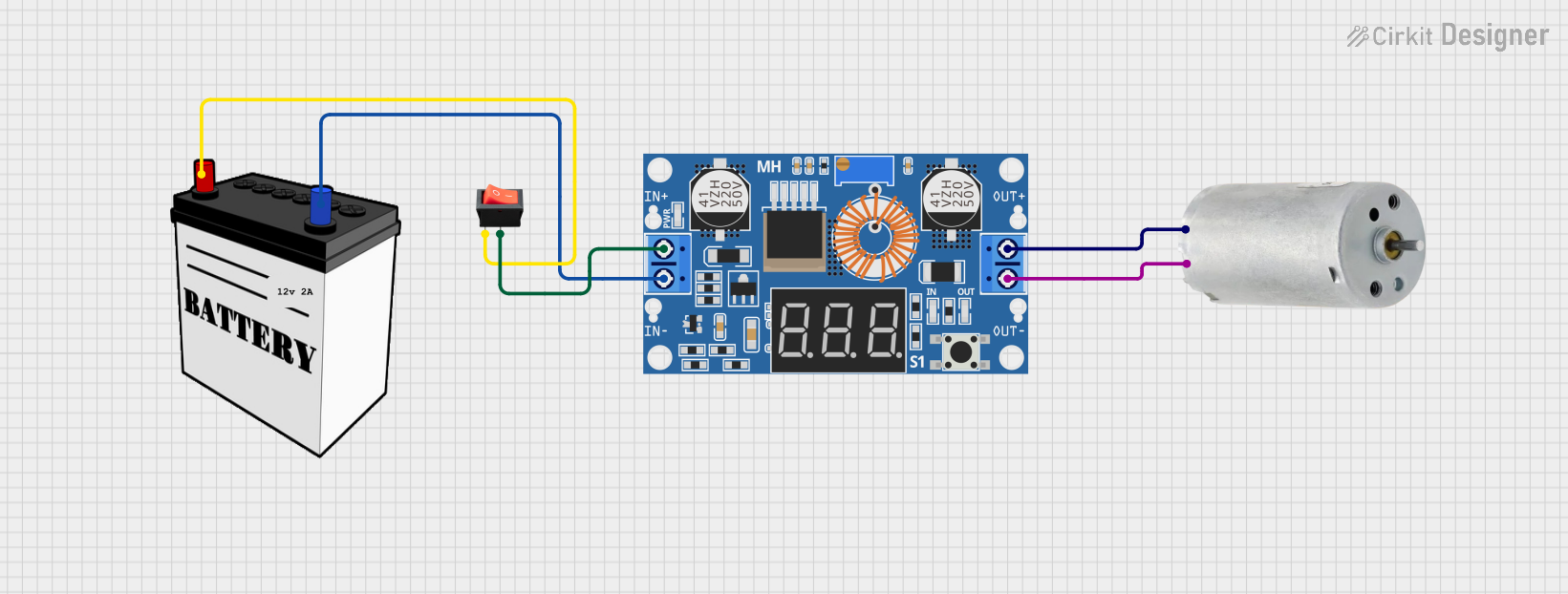
 Open Project in Cirkit Designer
Open Project in Cirkit Designer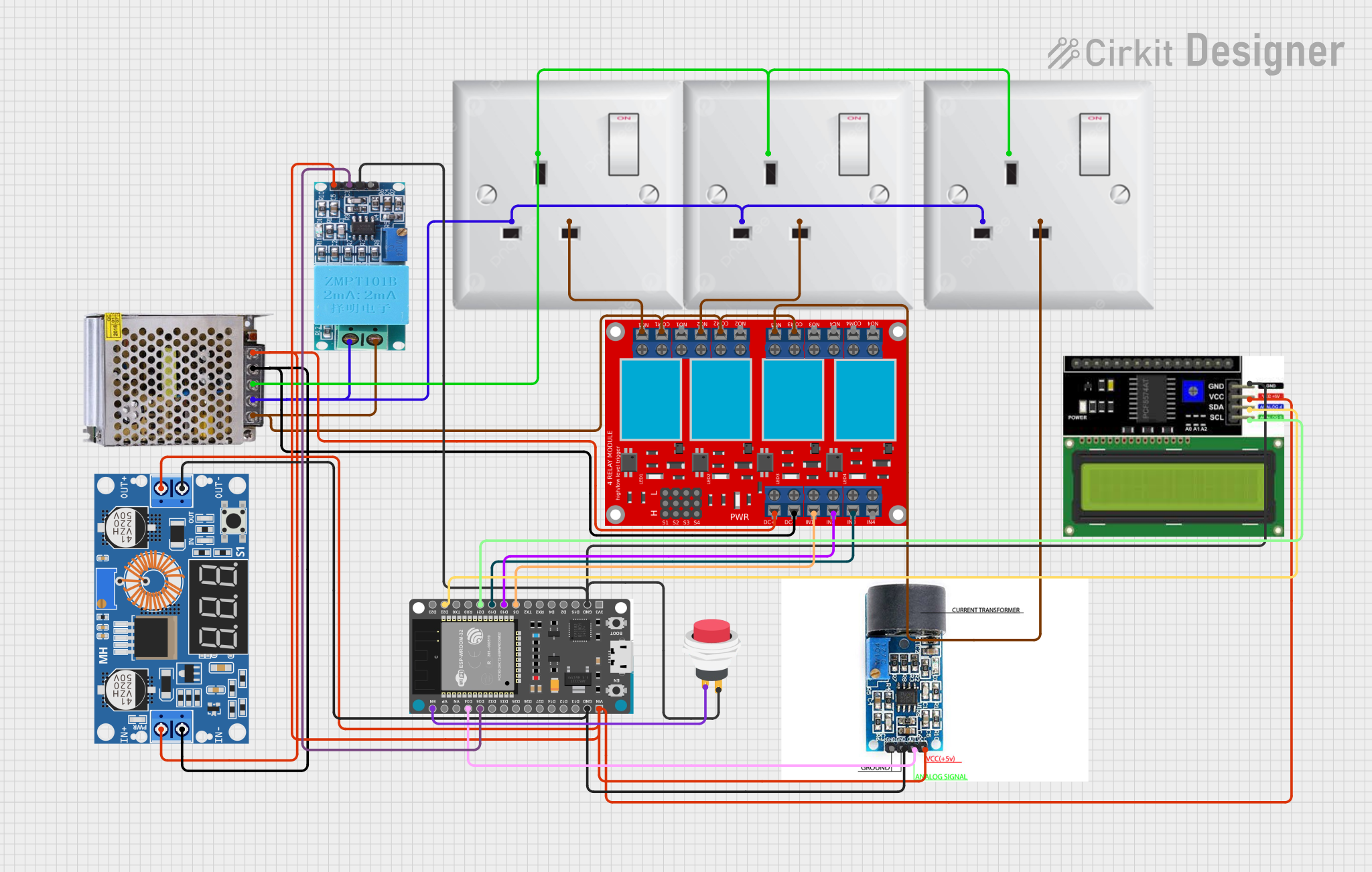
 Open Project in Cirkit Designer
Open Project in Cirkit Designer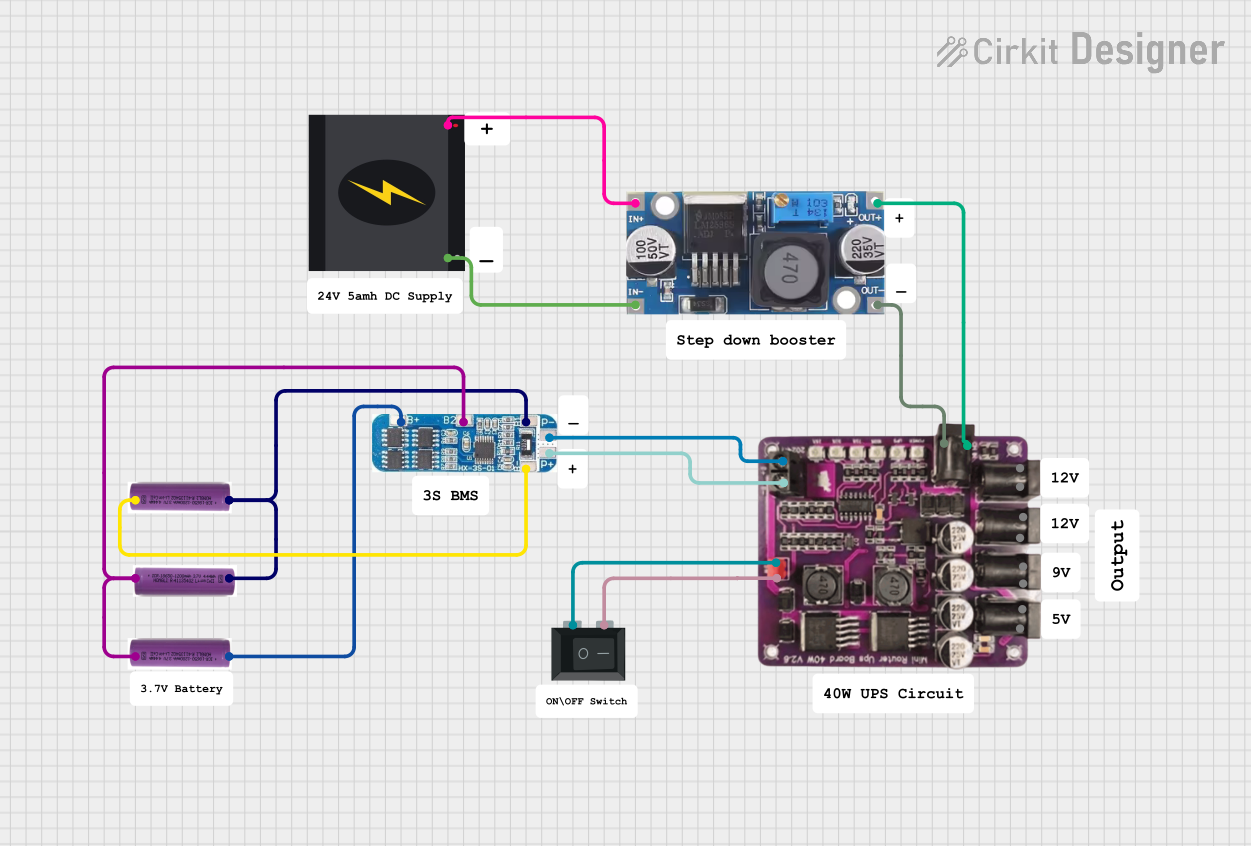
 Open Project in Cirkit Designer
Open Project in Cirkit Designer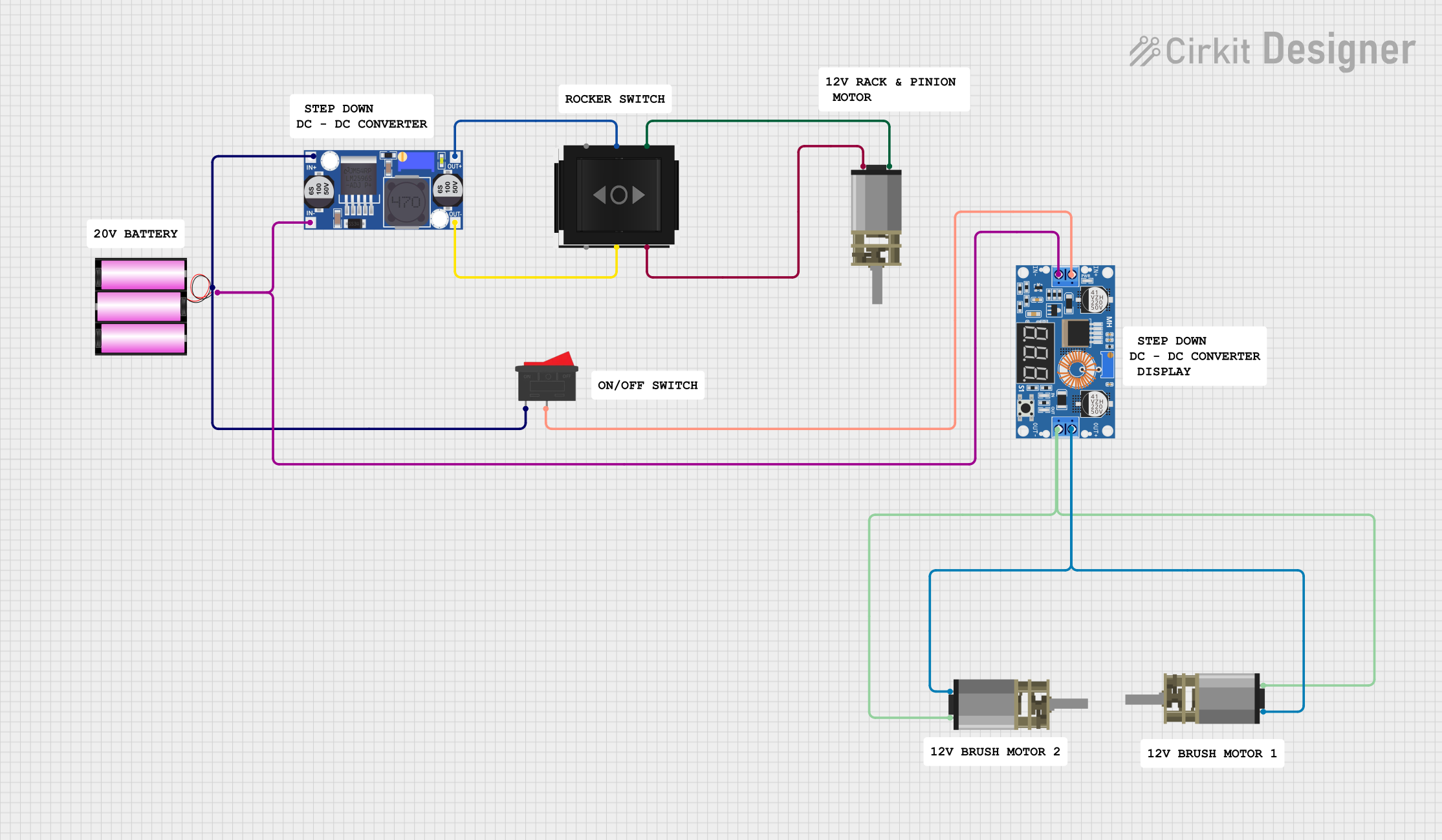
 Open Project in Cirkit Designer
Open Project in Cirkit DesignerExplore Projects Built with XL4015 Step Down 5-32V

 Open Project in Cirkit Designer
Open Project in Cirkit Designer
 Open Project in Cirkit Designer
Open Project in Cirkit Designer
 Open Project in Cirkit Designer
Open Project in Cirkit Designer
 Open Project in Cirkit Designer
Open Project in Cirkit DesignerCommon Applications
- Powering microcontrollers and development boards (e.g., Arduino, Raspberry Pi)
- Battery charging circuits
- LED lighting systems
- Industrial control systems
- DIY electronics projects requiring voltage regulation
Technical Specifications
The XL4015 Step Down 5-32V is a robust and versatile component. Below are its key technical details:
| Parameter | Value |
|---|---|
| Input Voltage Range | 5V to 32V |
| Output Voltage Range | 1.25V to 30V |
| Maximum Output Current | 5A |
| Output Power | Up to 75W |
| Efficiency | Up to 96% |
| Switching Frequency | 180 kHz |
| Operating Temperature | -40°C to +85°C |
| Dimensions | 51mm x 26mm x 14mm |
Pin Configuration and Descriptions
The XL4015 module has the following pin configuration:
| Pin Name | Description |
|---|---|
| VIN | Input voltage pin. Connect the input voltage source (5V to 32V) here. |
| VOUT | Output voltage pin. Provides the regulated output voltage (1.25V to 30V). |
| GND | Ground pin. Connect to the ground of the input and output circuits. |
| ADJ | Adjustment pin. Used to set the output voltage via the onboard potentiometer. |
Usage Instructions
How to Use the XL4015 in a Circuit
Connect the Input Voltage:
- Connect the positive terminal of the input voltage source to the
VINpin. - Connect the negative terminal of the input voltage source to the
GNDpin.
- Connect the positive terminal of the input voltage source to the
Set the Output Voltage:
- Use the onboard potentiometer to adjust the output voltage.
- Turn the potentiometer clockwise to increase the output voltage and counterclockwise to decrease it.
- Use a multimeter to measure the output voltage at the
VOUTpin while adjusting.
Connect the Load:
- Connect the positive terminal of the load to the
VOUTpin. - Connect the negative terminal of the load to the
GNDpin.
- Connect the positive terminal of the load to the
Verify Connections:
- Double-check all connections to ensure proper polarity and secure connections.
Power On:
- Power on the input voltage source and verify the output voltage with a multimeter before connecting sensitive devices.
Important Considerations and Best Practices
- Ensure the input voltage is always higher than the desired output voltage by at least 1.5V for proper operation.
- Do not exceed the maximum input voltage of 32V or the maximum output current of 5A to avoid damaging the module.
- Use a heatsink or active cooling if operating at high currents for extended periods to prevent overheating.
- Place capacitors (e.g., 100µF electrolytic) at the input and output terminals to reduce voltage ripple and improve stability.
Example: Using XL4015 with Arduino UNO
The XL4015 can be used to power an Arduino UNO by stepping down a 12V input to 5V. Below is an example circuit and code:
Circuit Connections
- Connect a 12V DC power supply to the
VINandGNDpins of the XL4015. - Adjust the output voltage to 5V using the potentiometer.
- Connect the
VOUTpin of the XL4015 to the5Vpin of the Arduino UNO. - Connect the
GNDpin of the XL4015 to theGNDpin of the Arduino UNO.
Arduino Code Example
// Example code to blink an LED connected to pin 13 of Arduino UNO
// Ensure the Arduino is powered via the XL4015 module (set to 5V output).
void setup() {
pinMode(13, OUTPUT); // Set pin 13 as an output pin
}
void loop() {
digitalWrite(13, HIGH); // Turn the LED on
delay(1000); // Wait for 1 second
digitalWrite(13, LOW); // Turn the LED off
delay(1000); // Wait for 1 second
}
Troubleshooting and FAQs
Common Issues and Solutions
No Output Voltage:
- Cause: Input voltage is not connected or is below 5V.
- Solution: Verify the input voltage is within the 5V to 32V range and properly connected.
Output Voltage Not Adjustable:
- Cause: Faulty potentiometer or incorrect adjustment.
- Solution: Check the potentiometer for damage and ensure it is being turned correctly.
Overheating:
- Cause: High current draw or insufficient cooling.
- Solution: Add a heatsink or active cooling to the module.
Voltage Ripple or Instability:
- Cause: Insufficient input/output capacitors.
- Solution: Add capacitors (e.g., 100µF electrolytic) to the input and output terminals.
FAQs
Q1: Can the XL4015 step up voltage?
No, the XL4015 is a buck converter and can only step down voltage. For stepping up voltage, use a boost converter.
Q2: Can I use the XL4015 to charge batteries?
Yes, the XL4015 can be used for battery charging applications. However, ensure the output voltage and current are set according to the battery's specifications.
Q3: What is the efficiency of the XL4015?
The XL4015 has an efficiency of up to 96%, depending on the input voltage, output voltage, and load conditions.
Q4: Is the XL4015 suitable for powering sensitive electronics?
Yes, but it is recommended to add capacitors to reduce voltage ripple and ensure stable operation.